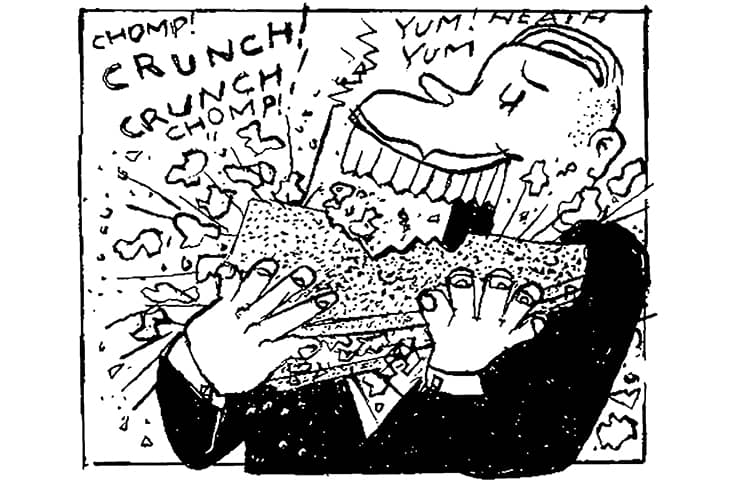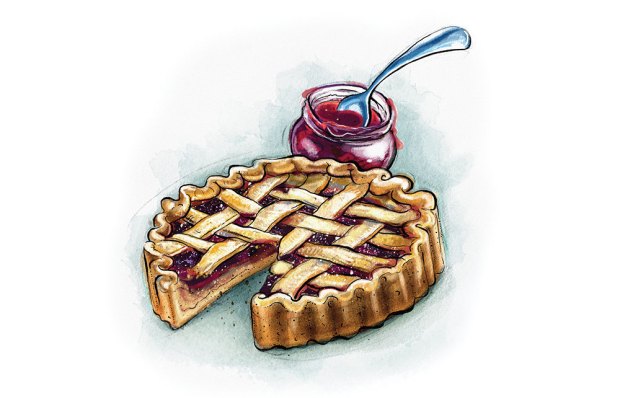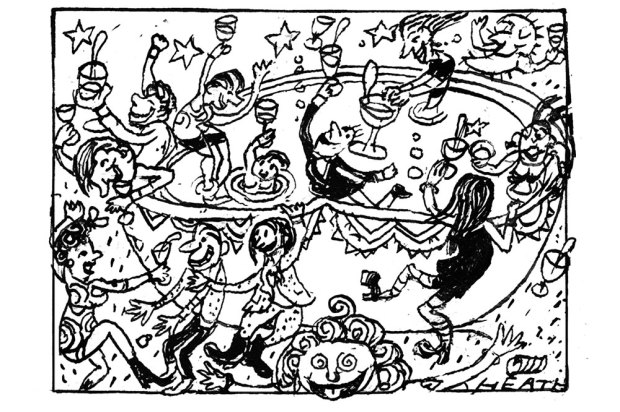A crisp sandwich is a private and personal endeavour. In my experience (and I have considerable experience in this particular area) it is usually eaten alone in the kitchen, often over the sink. It is deliberately unsophisticated, the ultimate fast food: simple, salty, satisfying. It is a snack that speaks of the person you are, rather than the person you want to be.
I firmly believe that no food should be a guilty pleasure, but I’ll concede that crisps sandwiched between two heavily buttered slices of bread does not scream nutritional balance. Despite this, or perhaps because of it, a recent poll (admittedly commissioned by Walkers, which probably has some potato skin in the game) found that the average UK adult eats 35 crisp sandwiches a year – implying a collective total of over two billion, which makes me oddly proud of my country.
Purists will tell you that a crisp sandwich should contain only crisps. But for many, crisps are a general-purpose ingredient, deployed frequently and liberally to give other sandwiches – cheese and pickle, ham and mustard, chicken salad – crunch.
Structural integrity is an important consideration. The bread must be sufficiently robust to contain the crisps once squished, and stand up to the vigorous application of a butter knife. But it can’t be chewy or you’ll lose your crisps the moment you bite into it. Posh bread – ciabatta, sourdough and so on – is a non-starter. Fancy crisps don’t work either: they are too thick, too crunchy, too much like hard work. Thick white sliced bread is the only real acceptable choice, with classic fried potato crisps. (This is no place for a corn snack, thank you very much.)
A crisp sandwich defies mass production, largely because it must be made to order lest the crisps end up soggy. When in 2010 Asda attempted the impossible – a pre-packed crisp sandwich – the bread and crisps came separately for self-assembly. It was a prudent decision, but the concept never caught on. Maybe they were just ahead of their time: 2015-16 was the golden age of crisp sandwiches. The world’s first dedicated crisp sandwich café, Simply Crispy, opened in Belfast, offering some 35 varieties which sold out within two hours. This was swiftly followed by a Dublin-based pop-up run by the cult Irish crisp manufacturers Tayto, and by Mr Crisp in Keighley, West Yorkshire. On the other side of the pond, Late Late Bar, an Irish pub in the Lower East Side of New York, introduced a chive brioche roll stuffed with Tayto cheese and onion crisps, Ballymaloe stout relish and ketchup, pickles and cheddar cheese mayo.
In the same year, Irish airline Aer Lingus began offering a crisp sandwich on their in-flight menu. Like Asda’s, these were make-your-own affairs: passengers were presented with two slices of white bread, a pat of Irish butter and a packet of Tayto cheese and onion crisps. Despite huge popularity, the option was only available for a brief, blissful six months before being discontinued.
The crisp sandwich has famous fans in the food world. Hugh Fearnley-Whittingstall has professed his love for them, as have Nadiya Hussain (buttered white bread, Marmite crisps and salad cream) and Jack Monroe. The late, great Amy Winehouse topped hers with sliced banana. Each to their own.
Got something to add? Join the discussion and comment below.
Get 10 issues for just $10
Subscribe to The Spectator Australia today for the next 10 magazine issues, plus full online access, for just $10.
You might disagree with half of it, but you’ll enjoy reading all of it. Try your first month for free, then just $2 a week for the remainder of your first year.















Comments
Don't miss out
Join the conversation with other Spectator Australia readers. Subscribe to leave a comment.
SUBSCRIBEAlready a subscriber? Log in